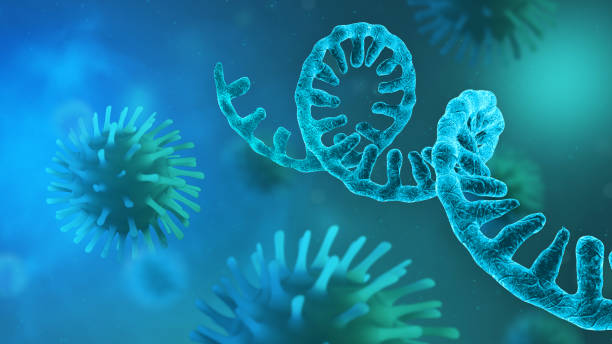As India celebrated the attainment of 2 billion COVID vaccination shots on Sunday, a trip that took 18 months to complete, it’s time to look back at the timeframes that led to this accomplishment.
The World Health Organization classified the COVID-19 epidemic, which started in China’s Wuhan in 2019, a pandemic on March 11, 2020. On March 12, 2020, India announced the first fatality in Kalburgi, Karnataka. On April 19, 2020, the Central Government established a high-level task force for COVID vaccine and Covid diagnostic development, as well as a national expert group on COVID immunisation in August 2020.
On November 29, 2020, the government announced a Rs 900 crore stimulus package for the ‘Program COVID Suraksha,’ the Indian COVID vaccine development mission.
Covishield and Covaxin were authorised for limited usage in emergencies on January 1 and 2, respectively, shortly after the announcement.
Prime Minister Narendra Modi initiated the COVID-19 immunisation push for healthcare professionals on January 16, 2021, and for frontline workers on February 2.
On March 1, there was a vaccination push for older adults (over 60) and those with co-morbidities (45-59 years).
The immunisation push for people aged 45 and up began on April 1.
Persons aged 18 and up (Private Sector/State Prioritization) began their immunisation on May 1.
On June 21, 2021, all people aged 18 and up received free vaccinations.
On January 3, 2022, adolescents (aged 15-18) began receiving vaccinations.
India began providing preventative dosages to healthcare staff, frontline workers, older folks, and individuals with comorbidities on January 10, 2022.
Vaccination for youngsters aged 12 to 14 years old began on March 16, 2022. In addition, on March 16, this year, all people aged 60 and up received a prophylactic immunisation.
The free precautionary dosage for adults aged 60 and up began on April 10, while the paid precautionary dose for people aged 18 and up began on the same day.
On July 15, 2022, all people aged 18 and above received a free prophylactic dosage at government health centres.
The immunisation campaign was carried out in seven stages.
Vaccination for breastfeeding moms was authorised on May 19, 2021, and vaccination for pregnant women was approved on July 2, 2021.
In the nine months and five days since its inception, India’s COVID immunisation effort has reached the one billion dosage mark in October 2021.
The achievement of India in creating not one, but numerous vaccines for the COVID-19 virus may be attributed to several systemic initiatives implemented at the top level.
Under Prime Minister Narendra Modi’s aggressive and imaginative leadership, India funded COVID19 vaccine research, development, and manufacture under the “Make-in-India” and “Make-for-World” Strategies.
The government began using cutting-edge technologies such as CoWIN to evaluate geographical coverage, track AEFI for vaccines, promote inclusivity, and provide a single reference point for citizens to follow their vaccination schedule, as well as prioritise vaccine administration based on scientific evidence and global best practises.
Several systematic initiatives were also used to ensure capacity building for this countrywide activity.
The existing supply chain for COVID-19 vaccine storage and transport was leveraged and reinforced, and effective monitoring of vaccine distribution and availability of vaccines and syringes was ensured at all times.
The Ministry of Health and Family Welfare, the Ministry of Civil Aviation, state governments, and vaccine manufacturers worked together to guarantee that COVID-19 vaccinations were delivered to 60 consignee locations around the country within three days.
The free and voluntary countrywide COVID-19 vaccination campaign in India was conducted in a citizen-friendly manner, with initiatives such as Har Ghar Dastak, Workplace CVC, school-based vaccination, immunisation of those without identity documents, Near-to-Home CVC, and Mobile Vaccination Teams.
India’s National COVID19 Vaccination Programme also achieved geographical and gender parity, with 71% of CVCs located in rural regions and more than 51% of vaccine doses provided to women.
For the nationwide COVID-19 immunisation programme, 213.51 crore syringes were deployed.
India has delivered 1,99,98,36,832 vaccination shots in total, with 1,63,168 more injections needed to reach the 2 billion doses mark.”
“Watch history being made!” India, led by Prime Minister @NarendraModi Ji, is on track to reach the 200-million COVID-19 immunisation mark! “The countdown has begun,” Union Health Minister Mansukh Mandaviya tweeted on Saturday.
Mandaviya began the ‘Covid Vaccination Amrit Mahotsav’ at the Covid Vaccination Camp in Nirman Bhawan here on Friday, urging people to acquire the free dosage to protect themselves against COVID-19.”
“All Health Ministry personnel began administering the free dosages.” “I call to all citizens above the age of 18 to take advantage of the free dose to secure your protection against COVID19,” Mandaviya stated.
“On ‘Azadi Ka Amrit Mahotsav,’ all eligible populations (18+) will receive a free prophylactic dosage for the following 75 days, beginning today,” he said.
The free vaccination campaign was initiated with the goal of increasing the uptake of the COVID vaccine’s preventive dosage among the eligible adult population.
Also Read: Novel approach of inducing immune responses is discovered
This particular vaccination push is part of the ‘Azadi ka Amrit Mahotsav’ festival and seeks to deliver free prophylactic doses to all adults (18 years and over) eligible population at Government COVID Vaccination Centres (CVCs).
From July 15 to September 30, 2022, the Centre has announced a special programme called ‘COVID Vaccination Amrit Mahotsava’ that would distribute free prophylactic doses at all Government Covid Vaccination Centres for everyone aged 18 and up for 75 days.
All people above the age of 18 who have completed 6 months (or 26 weeks) since the administration of the second dosage are eligible for the precaution dose.
Follow Medically Speaking on Twitter Instagram Facebook





